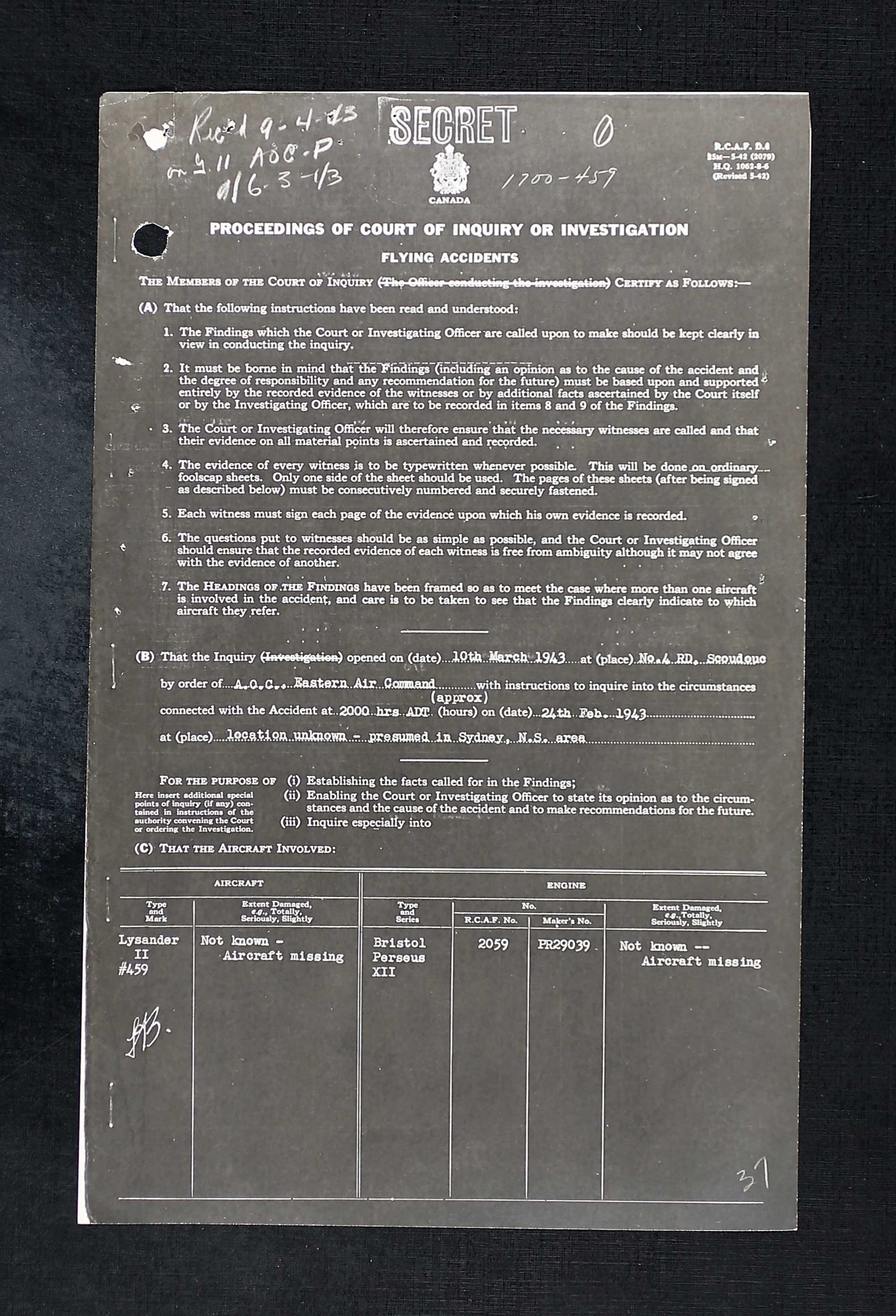
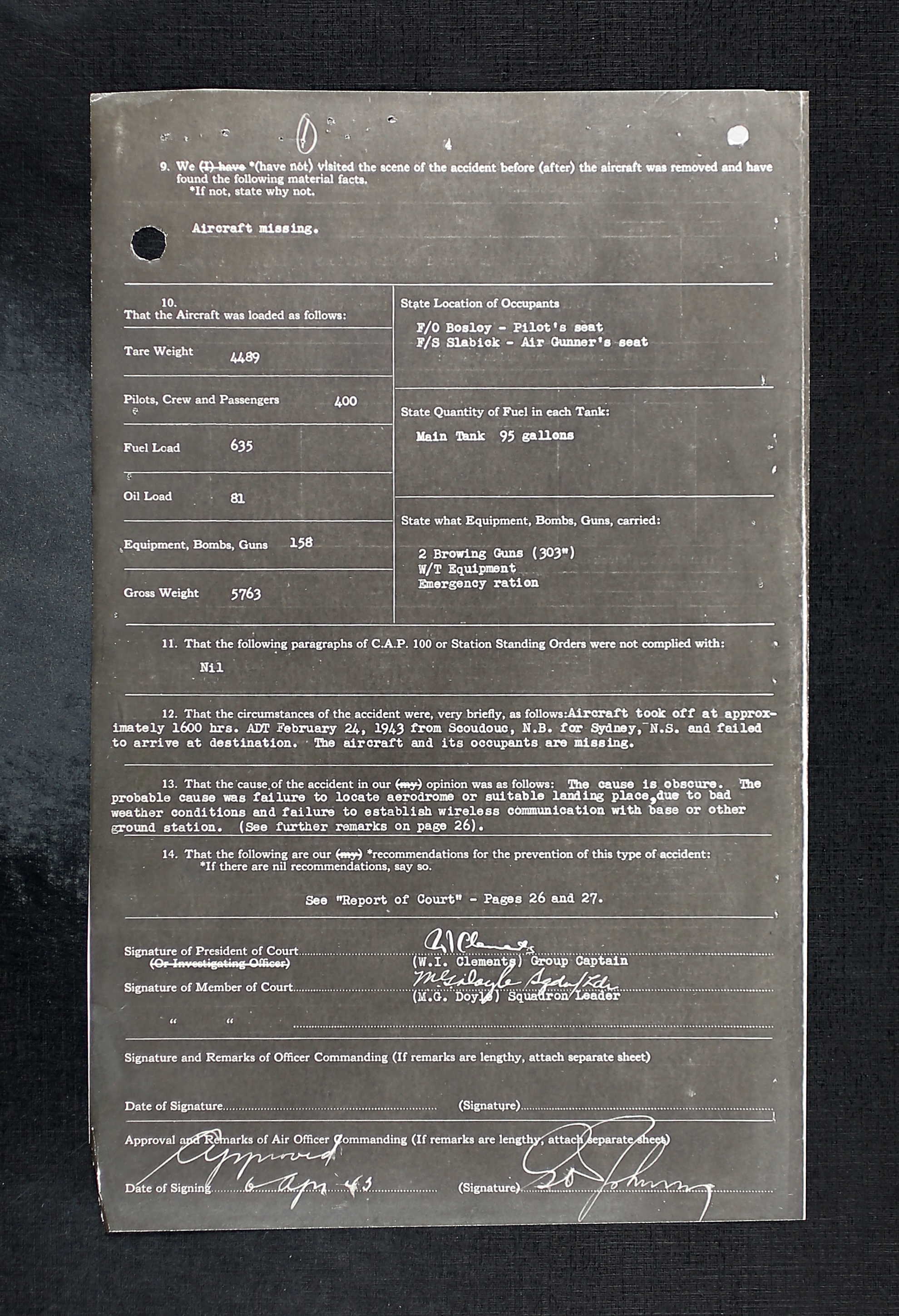
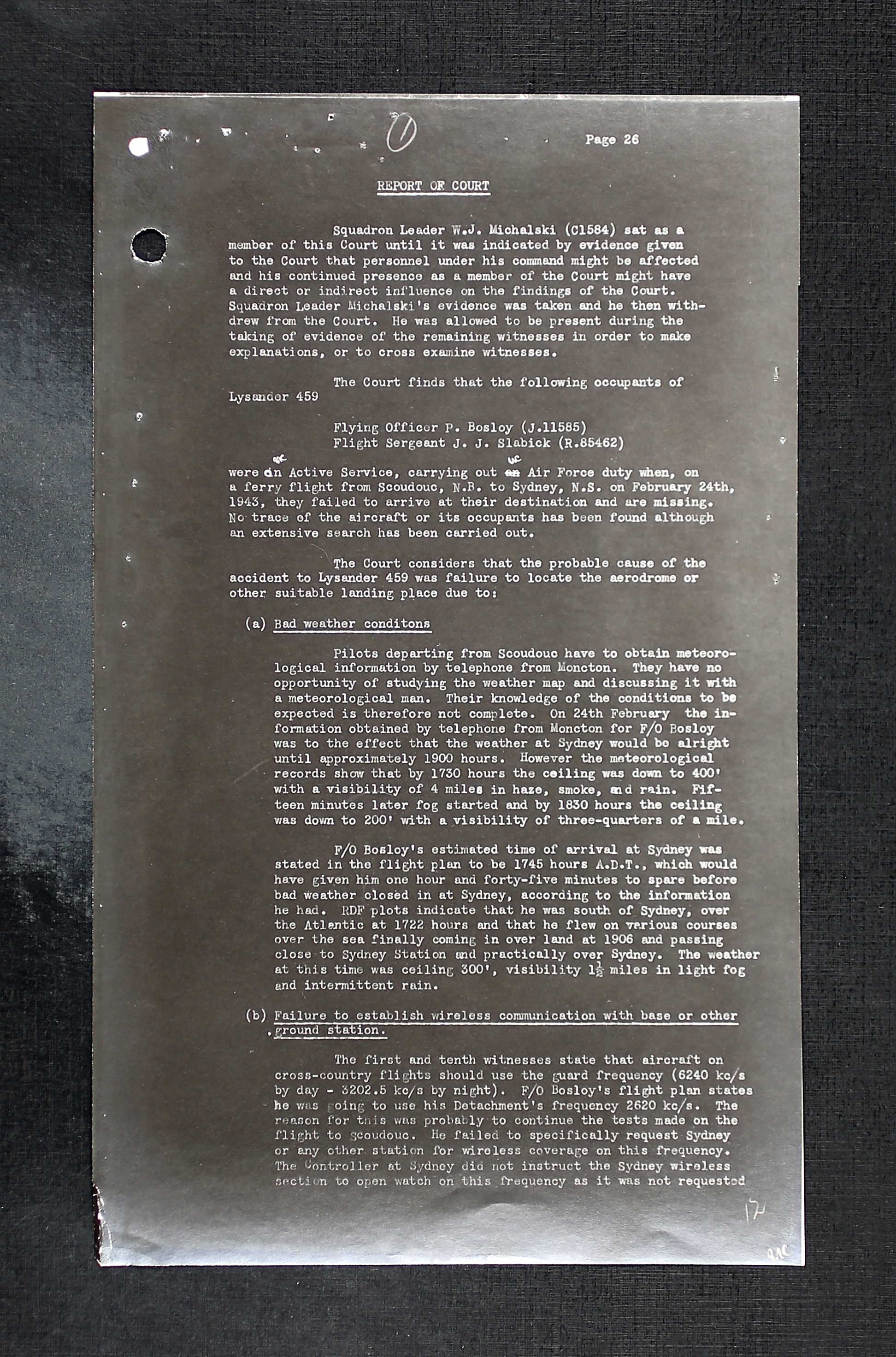
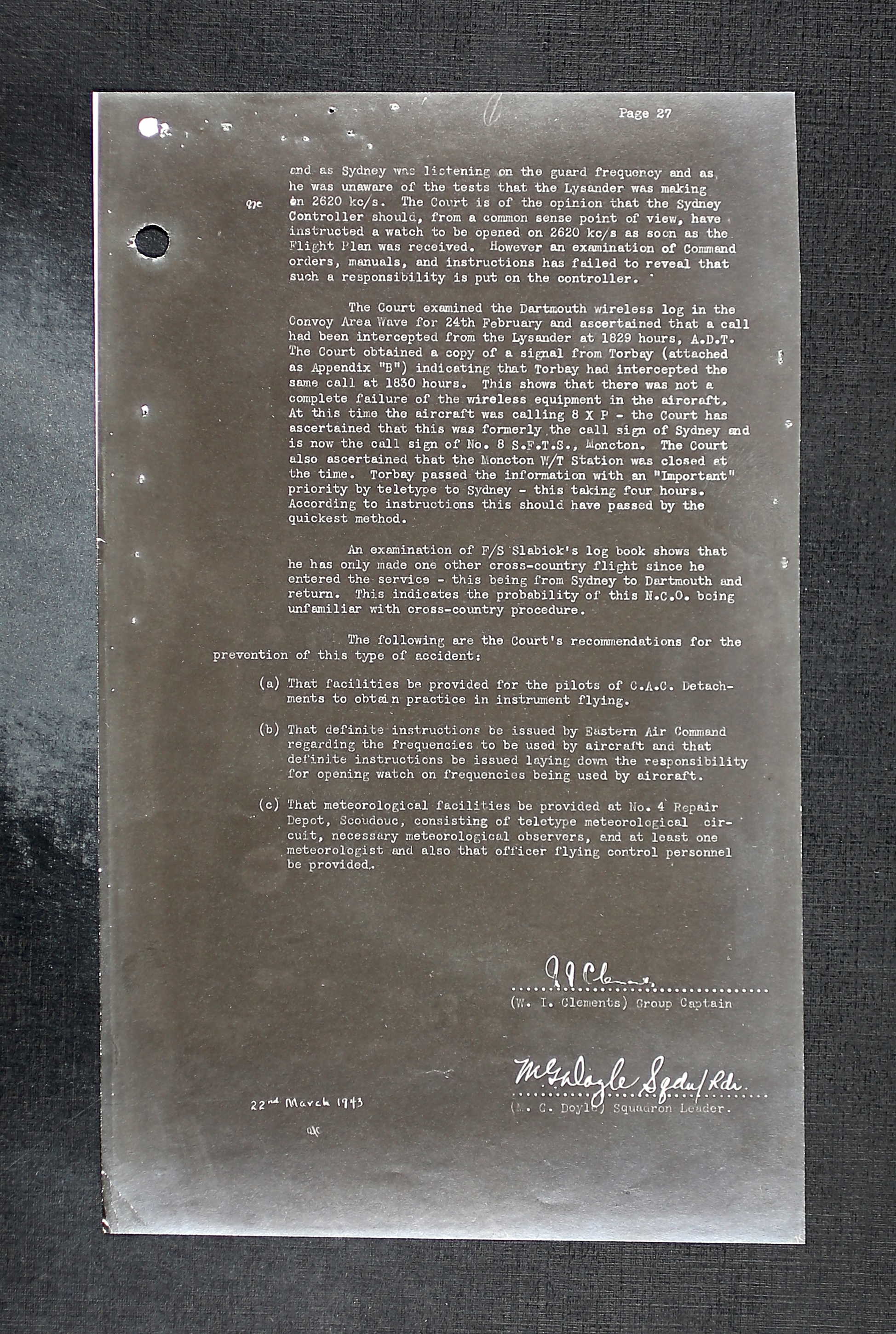
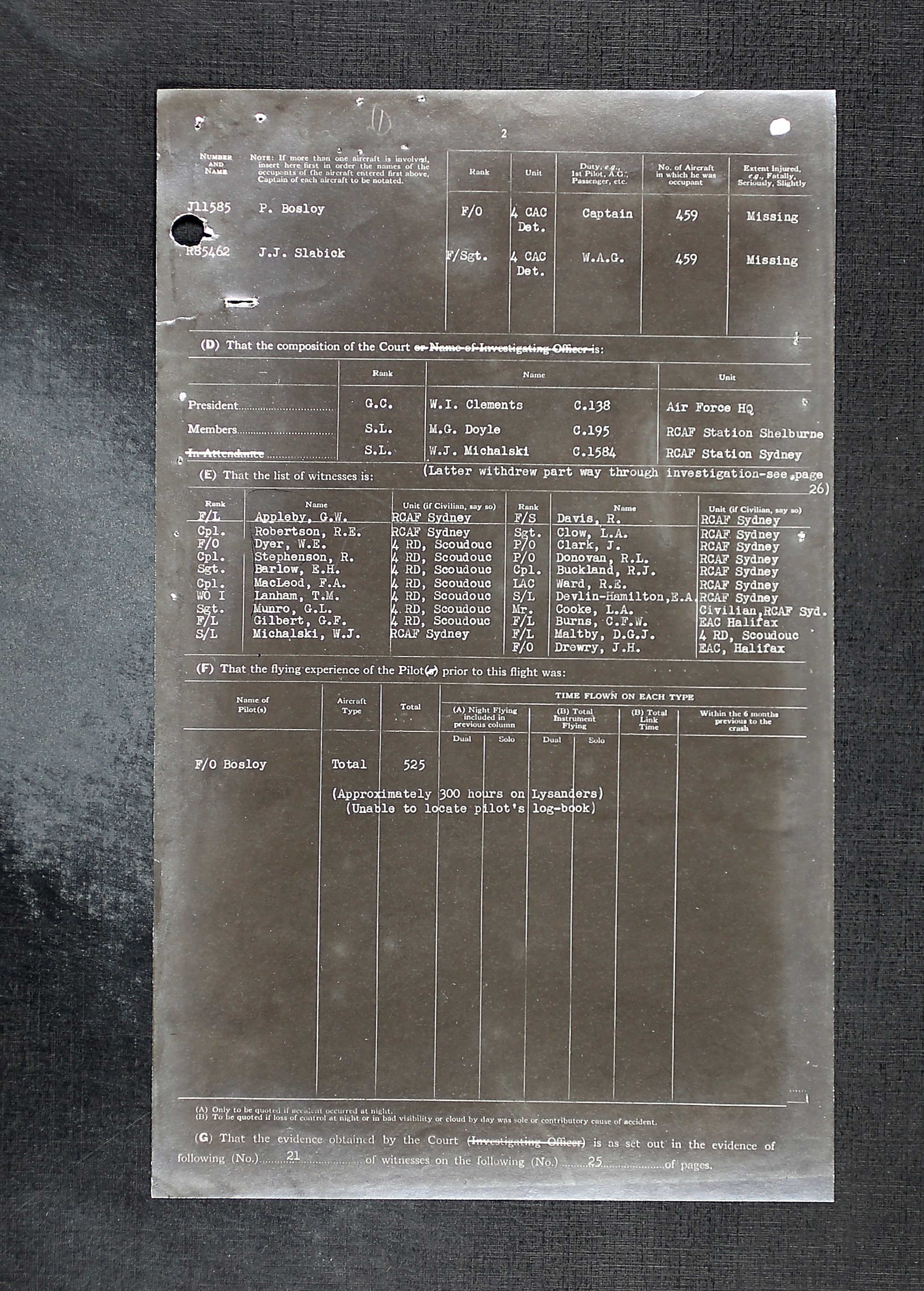
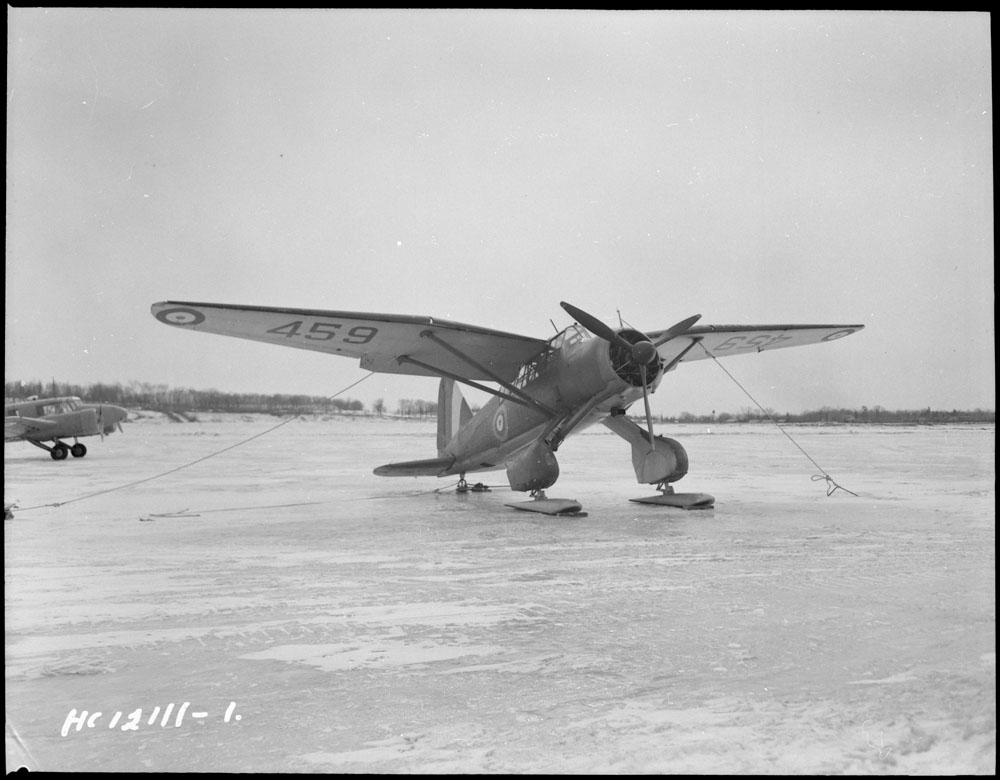
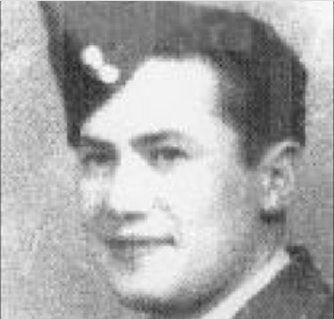
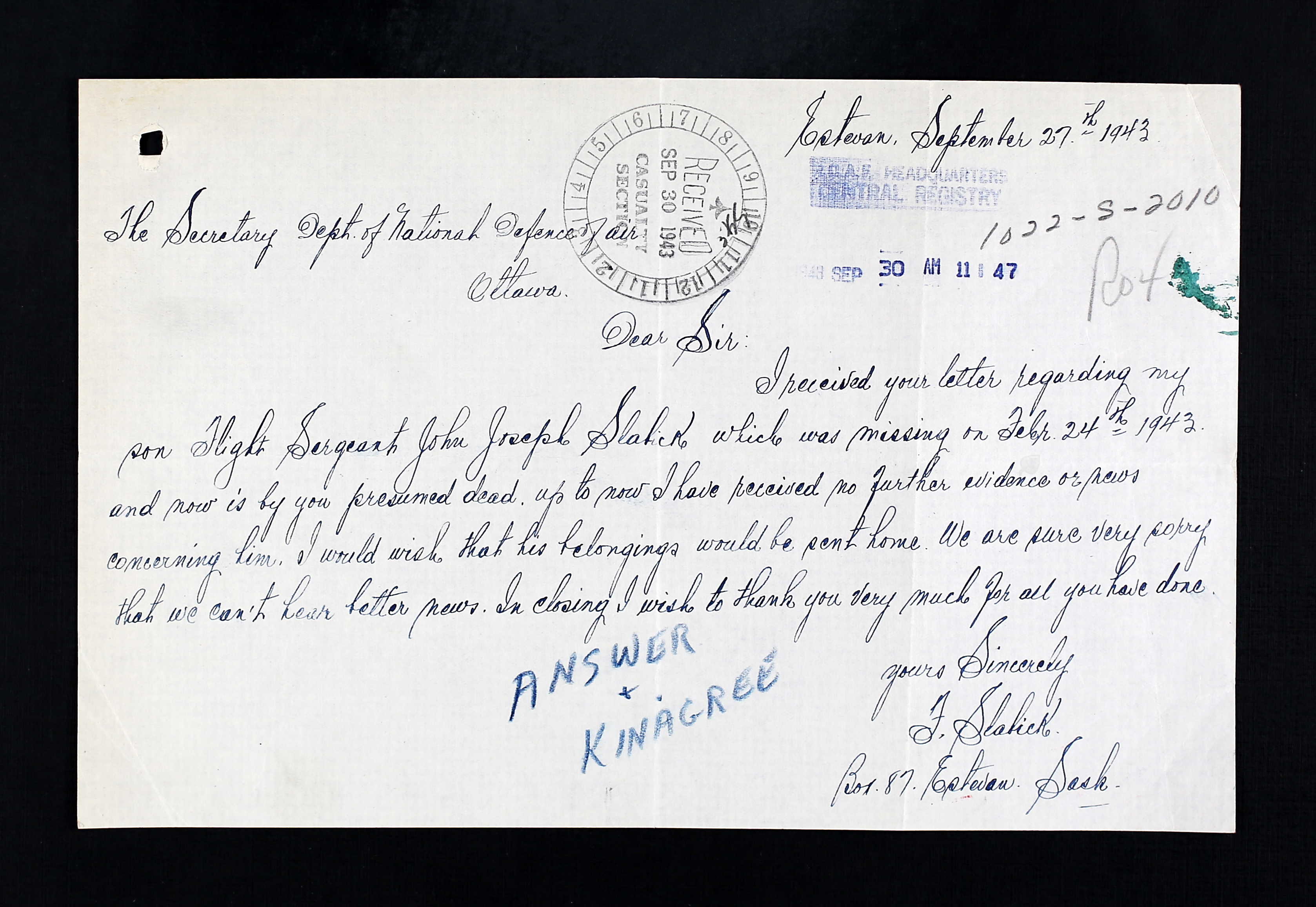
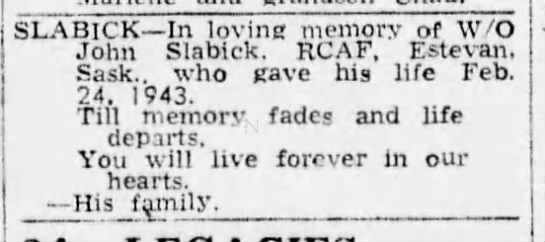
May 14, 1920 - February 24, 1943









John Joseph Slabick, born in Summerberry, Saskatchewan, was the son of Frank Slabick (1889-1975), section foreman, and Victoria (nee Matushko) Slabick (1884-1984), later of Estevan, Saskatchewan. He had three brothers, Edward (1922-2000), Thomas (1925-1982), and Frank (1928-1983), and two sisters, Anna Olsen and Nellie Slabick Weckend, a nurse. A brother, Joseph, died in 1921 at the age of 7. The family was Roman Catholic.
With a Grade XII education, he worked in 1938-39 harvesting, then for Jerbin Hardware as a clerk, service man, and driver for five months prior to enlisting in the RCAF in mid-July 1940. as either a pilot or observer. He hoped to get into refrigeration work after the war.
“Lived in Saskatchewan all his life. Not employed, had just finished high school and had had two months taking air conditioning and refrigeration engineering at Chicago before enlistment.”
He liked to play baseball, handball, hockey, curling, pole vaulting, and high jumping. His physique was considered athletic and he was mentally alert. He had a 1” oblique scar at the base of his right thumb. He stood 5’6½” tall and weighed 147 pounds. had brown eyes and brown hair. “Blood pressure borderline. Consider fit. Average candidate mentally and physically.” Other comments: “Wants pilot. Quiet Polish boy.”
The RCAF accepted John on February 13, 1941. He earned his Air Gunner Badge on February 2, 1942. “Good type, intelligent, clever, pleasant, good mannered, confident, mature for age.”
John’s journey through the BCATP included Brandon, Manitoba, Calgary, Regina, High River, Trenton, Mossbank, Halifax and Sydney, Nova Scotia.
At No. 2 ITS: “Former hardware and trucking business. Appears to be cool, confident, keen fighter type. Average activity in sports.” He was 147th out of 174 in class and earned 74%.
At No. 5 EFTS, High River: “Low average, lacks co-ordination and judgment. Doubtful pupil.” In ground training: “Fail. 58%. Appears to have average ability but too much effort placed on flying and not enough on ground subjects. Should have been an average pilot if training continued. Conduct has been very good. He is pleasing and smart in appearance. Remuster to Wireless Air Gunner.”
“A young Polish boy who failed because he probably got a little lazy and forgot to apply himself to his ground work. He is not overly keen about the air, but states he ‘likes it well enough.’ Some pressure was used to make him a WAG, and he has accepted the position. It is very likely he will make a fair enough WAG as he is stable and only lacks motivation.”
At No. 2 BGS, he was 24th out of 24 in his class with a 60.9%. “Pleasant and neat in appearance. Does not seem to be very intelligent. Rather easy going.” Other comments: “Below average.” At No. 2 Wireless School: “Below average. 107th out of 162 in class. 67.7%.”
Circumstances of Death: Lost in aircraft Lysander II 459. “Aircraft took off at approximately 1600 hours February 24, 1943 from Scoudouc, NB for Sydney, NS and failed to arrive at its destination. The aircraft and its occupants are missing. The cause is obscure. The probable cause was failure to locate aerodrome or suitable landing place due to bad weather conditions and failure to establish wireless communications with base or other ground station.”
“An examination of F/L Slabick’s logbook shows that he has only made one other cross-country flight since he entered the service, this being from Sydney to Dartmouth and return. This indicates that this NCO being unfamiliar with cross-country procedure.”
For more information, see the Court of Inquiry above where twenty-one witnesses were called, via Heritage Canadiana, reel C5936, image 1703.
“His flight commander considered F/O Bosloy steady and capable but with very little experience in instrument flying. F/S Slabick, WAG had approximately 350 hours flying time and was considered a very good and reliable WAG. He was considered inexperienced on cross country procedure.”
DESCRIPTION OF FLIGHT: “The flight to the Repair Depot In Lysander 459 was carried out as successfully on the 23rd of February, the modification was made on the 24th and completed at 1400 hours that day. The aircraft was then test flown by a test pilot of the depot Maintenance Flight. The test was satisfactory in all respects and on its completion, the aircraft was turned over to F/O Bosloy. F/O Bosloy filed his return flight plans with the clerk operations who was employed as aerodrome control officer at Scoudouc. Weather check had been made by the pilot that afternoon and at about 1550 hours, F/O Bosloy was told that the weather would be favourable enroute, that weather would not close down until dark at Scoudouc, approximately 1900 hours and later at Sydney. Aircraft was refuelled and F/O Bosloy and F/S Slabick took off at 1630 hours for Sydney, estimated time of arrival at base 1745 hours. After the departure of the aircraft, a message was sent to Sydney by aerodrome control officer at Scoudouc by teletype, repeat to Command Flying Control which read as follows: ‘Lysander 459 F/O Bosloy departed Scoudouc 1900 hours ETS Sydney 2045 hours. Call sign D8U A 3 radio frequency 2620.” Weather deteriorated before its forecasted tim. At about 1730 hours, it began to close in. Just before 1800 hours, other aircraft returning to Sydney found it impossible to land there and were instructed to proceed to Charlottetown, PEI. The Lysander never reached base and is still missing with its pilot and crew of one.”
In a memo dated April 12, 1943: “The Lysander took off from Scoudouc at about 1600 hours ADT to return to Sydney after carburettor adjustments. Only one radio call was intercepted and that by Torbay at 1830 hours. The aircraft was also plotted by RDF from 1722 hours to 1822 hours over the Atlantic East of Nova Scotia and at about 1936 hours, ADC, reported the aircraft passed near Sydney. From that time, the aircraft and crew are missing.”
“There is ample evidence to show that aircrew are not making proper use of radio navigational aids that do exist. The WAG of the Lysander had little or no knowledge of cross country procedure. He was operating his radio on the wrong frequency and did not know the call sign of his own base. The pilot of the Lysander had very little experience of instrument flying as No. 4 CAC Detachment have no aircraft on which to practice.”
John did not have life insurance that his family was aware of but held $460 in War Savings Certificates and Victory Loan Bonds.
In many newspaper articles, John’s last name was misspelled. His name was also misspelled in some of his documents.
In late October 1955, Mr. Slabick received a letter informing him that since John had no known grave, his son’s name would appear on the Ottawa Memorial.
Slabick Lake was named after John. It has an elevation of 375 metres. Latitude 55° 36' 0" N, Longtitude 104° 28' 1" W.
His family placed “In memoriams” in the Leader Post from 1945 until at least February 1974.